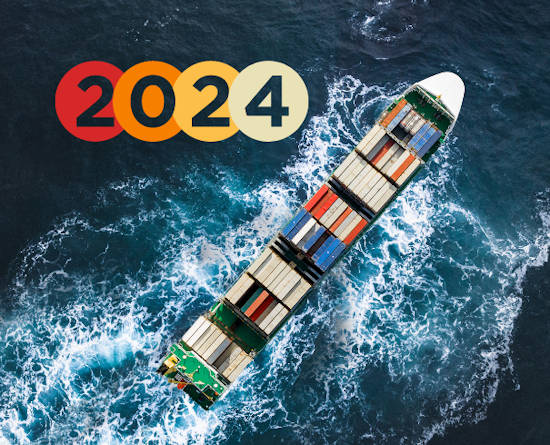2024: The Latest Piracy Solutions

From drones patrolling the skies to electrified barriers warding off unwanted boarders, the battle against piracy has entered a new era of innovation. This journey into the top 10 new tech solutions for deterring pirates showcases how the blend of cutting-edge technology and strategic ingenuity is setting sail towards safer seas. Whether it’s through the eyes of advanced surveillance systems or the immersive training worlds of virtual reality, each technology represents a pivotal piece of the puzzle in protecting the lifeblood of global trade.
* Please send feedback/suggestions to editor @ shipuniverse.com
#1 Advanced Drone Surveillance Systems
Imagine having a bird’s-eye view of the vast ocean around your ship, with eyes that can see in the dark. That’s exactly what advanced drone surveillance systems offer. Equipped with high-resolution cameras and night vision, these drones are like high-flying sentinels, scouting for danger from above.
How Much Will It Set You Back?
Deploying a drone surveillance system isn’t exactly pocket change, but it’s becoming more affordable. A basic setup could start around $10,000, while more sophisticated systems, including multiple drones with enhanced capabilities, could climb to $100,000 or more. Considering the cost of a pirate attack, it’s an investment many are willing to make.
Effectiveness: Worth Its Weight in Gold?
Absolutely. Drones provide real-time data, allowing ships to navigate away from threats long before they become imminent. Their ability to cover vast areas and send instant alerts makes them invaluable for early detection. While not a silver bullet, when used as part of a comprehensive security strategy, drones significantly reduce the risk of piracy.
#2 AI for Threat Detection
Step aside, human intuition; AI is here to predict the future. By feeding on data from radar, satellite images, and past piracy incidents, AI algorithms can analyze patterns and predict possible pirate attacks before they happen, advising on safer routes.
The Price Tag of Peace of Mind
Implementing AI for threat detection can vary widely in cost, depending on the complexity of the system. For small to medium-sized operations, costs can range from $20,000 to over $100,000 for state-of-the-art systems. It’s a small price for big peace of mind, especially for vessels navigating high-risk areas.
Can AI Really Outsmart Pirates?
It sure can try. While not foolproof, AI significantly enhances decision-making, providing captains with data-driven advice that can outmaneuver pirates. Its ability to learn and adapt from new data means it gets smarter over time, making it an increasingly effective tool against piracy.
#3 Automated Water Cannon Systems
Gone are the days of manually operated water cannons. The future is automated, precision-driven, and, frankly, a bit soggy for would-be pirates. These upgraded cannons can detect and target threats automatically, unleashing a powerful jet of water that can knock intruders off their feet (or skiffs) before they even get close.
A Splash on the Wallet?
Investing in an automated water cannon system might make a small wave in your budget. Starting prices hover around $30,000, but for top-of-the-line systems, you could be looking at $100,000 or more. It’s a significant outlay, but when it comes to protecting a vessel and its crew, many see it as money well spent.
Making Waves in Effectiveness
When it comes to keeping pirates at bay, these cannons are a literal blast. Their ability to be remotely controlled means that they can respond to threats faster than human reaction times, providing an effective first line of defense. While they won’t solve the piracy problem alone, in conjunction with other security measures, they make approaching a vessel significantly more challenging and wetter for pirates.
#4 Laser Deterrent Systems
If making pirates wet isn’t enough, how about dazzling them? Laser deterrent systems use non-lethal laser beams to disorient and temporarily impair the vision of potential attackers, making it difficult for them to maintain their course or aim weapons.
The Cost of Seeing the Light
Laser systems come with a price tag that might require a bit of squinting. Entry-level systems start at around $50,000, with more advanced setups pushing past the $250,000 mark. It’s a hefty investment, but for vessels at high risk of pirate attacks, the cost of not having such a deterrent could be far higher.
Illuminating Effectiveness
Lasers have proven to be an effective deterrent, causing confusion and disorientation without causing permanent harm. They can be particularly useful at night or during low visibility conditions, where traditional surveillance might struggle. As part of a multi-layered defense strategy, laser systems add a critical, non-lethal tool that can protect ships without escalating the situation into violence.
#5 Long-Range Acoustic Devices (LRAD)
Picture this: a device that can send a clear, verbal warning over miles of open sea, or unleash a discomforting sound beam to ward off suspicious boats without a single bullet fired. That’s the power of LRADs. These sonic cannons are all about stopping pirates in their tracks with the force of sound, ensuring safety without resorting to lethal measures.
Echoing the Cost
Getting your hands on an LRAD isn’t as hefty on the purse strings as you might think. Basic models can be acquired for around $20,000, with more advanced versions, capable of reaching further distances and equipped with a variety of sound options, ranging up to $100,000. It’s a sound investment for peace of mind.
Decibels of Deterrence
LRADs have proven their worth in deterring pirate attacks, offering a means to communicate and warn off potential threats from a safe distance. Their ability to project both voice commands and deterrent tones over vast distances makes them an invaluable tool in the maritime security toolkit. While not a standalone solution, in synergy with other security measures, LRADs provide a versatile and humane option for keeping pirates at bay.
#6 Integrated Ship Defense Systems
Imagine a ship that sees everything around it, integrating radar sweeps, camera feeds, and automated tracking systems into one cohesive defense mechanism. That’s the promise of Integrated Ship Defense Systems. This technology turns a vessel into a fortress, coordinating various security measures from a single control point for maximal awareness and swift response.
The Price of Integration
The cost of outfitting a ship with a fully integrated defense system can vary widely, depending on the complexity and scope of the integration. Basic setups might start around $50,000, but for a fully decked-out system encompassing high-end radar, sophisticated cameras, and comprehensive tracking capabilities, prices can soar into the hundreds of thousands. For many, the investment is a no-brainer for the level of security and control it provides.
Uniting for Security
The effectiveness of an Integrated Ship Defense System lies in its ability to bring together disparate security technologies into a single, streamlined operation. This not only improves the efficiency and response times to threats but also reduces the workload on crew members, allowing for more focused attention on navigation and other critical tasks. By centralizing the control of security measures, ships are better equipped to detect, deter, and defend against piracy attempts.
#7 Advanced Cybersecurity Measures
The threat isn’t just on the water; it’s in the wires, too. Pirates today aren’t just armed with grappling hooks and ladders; they’ve got laptops and malware. Cybersecurity measures for ships have become crucial in preventing digital hijacking attempts, where cyber pirates seek to take control of a ship’s navigation and operational systems without ever stepping foot on deck.
Locking Down the Digital Hatches
Cybersecurity setups for ships can range from basic software protections to comprehensive cyber defense systems, with costs varying widely. Small-scale solutions might start around $5,000, covering essential antivirus and firewall protections. More sophisticated systems, including intrusion detection services, encrypted communications, and continuous monitoring, could run upwards of $50,000 or more. Considering the potential loss from a hijacked vessel, investing in cybersecurity is a no-brainer for modern fleets.
Navigating Safer Cyber Waters
When it comes to fending off digital pirates, cybersecurity measures are proving their mettle. Implementing robust cyber defenses helps ensure that ships’ critical systems are safeguarded against unauthorized access, keeping navigation and operational controls secure. While the cyber seas can never be entirely risk-free, proper cybersecurity measures significantly lower the threat level, allowing ships to sail the digital waves with confidence.
#8 Electric Shields
Moving from digital defenses to electrifying deterrents, let’s talk about electrified fencing. This isn’t your average backyard fence; it’s a high-voltage barrier designed to give pirates a shocking surprise should they attempt to climb aboard.
The Cost of an Electric Guard
Installing electrified fencing around a ship’s perimeter is a powerful deterrent that comes with a variable price tag. Basic systems might start around $10,000 for small vessels, with costs escalating for larger ships or more complex installations, potentially reaching $100,000. It’s an electrifying investment that adds a literal layer of shock value to ship defenses.
A Jolting Deterrent
Electrified fencing serves as a strong physical deterrent, providing a non-lethal but persuasive reason for pirates to think twice before attempting to board. When combined with surveillance and other security measures, it forms an effective barrier that protects both the ship and its crew. While the idea is to prevent piracy attempts before they start, electrified fencing ensures that any pirate bold enough to try will find their advances abruptly halted.
#9 Satellite Tracking and Communication
Imagine having a guardian angel in the sky, one that watches over ships as they traverse the globe, especially through those notorious high-risk areas. That’s what enhanced satellite tracking and communication technologies offer. This isn’t just about making calls or sending emails; it’s about creating a protective dome of vigilance from space.
The Cost of Cosmic Oversight
The investment in satellite tracking and communication systems varies, depending on the scale and sophistication of the technology. For basic tracking services, costs might start at a few hundred dollars a month, scaling up to thousands for comprehensive global communication and monitoring solutions. Given the stakes, this celestial oversight is increasingly seen as indispensable for modern shipping operations.
Global Guardianship from Above
The effectiveness of enhanced satellite tracking and communication cannot be overstated. With these technologies, ships in distress can immediately alert authorities, share their precise location, and even stream real-time video to aid in response efforts. This level of oversight ensures that, no matter where a vessel finds itself, help is just a satellite signal away, providing a significant deterrent to piracy activities.
#10 VR Training Programs
Now, let’s take a plunge into the virtual world, where the only limit is imagination. VR training programs for maritime crews are revolutionizing how we prepare for the threat of piracy. By simulating pirate attacks in a controlled environment, crew members can experience the intensity of an encounter without the real-world risk, preparing them for the best responses and actions to take in various scenarios.
The Price Tag of Virtual Preparedness
Implementing VR training programs can range from relatively modest investments for off-the-shelf solutions to significant outlays for custom-built simulations tailored to specific ships or routes. Costs can start around $10,000 for basic setups, with more elaborate programs and equipment reaching $100,000 or more. Considering the depth of training and the level of preparedness it offers, many view it as a worthwhile investment in crew safety and security.
The Real Feel of Virtual Training
The effectiveness of VR training lies in its ability to immerse trainees in high-stress scenarios without the real-world danger. Crew members can practice everything from emergency maneuvers to counter-piracy tactics, gaining valuable experience and confidence. This hands-on learning approach enhances the crew’s ability to react swiftly and effectively, potentially saving lives and property in the event of an actual pirate attack.
Discover Your Ideal Anti-Piracy Solutions Today

Do you have a Maritime Product or Service that may be of interest to Shipowners? Tell us about it here!
Do you have feedback or insights? Please reach out to editor @ shipuniverse.com



